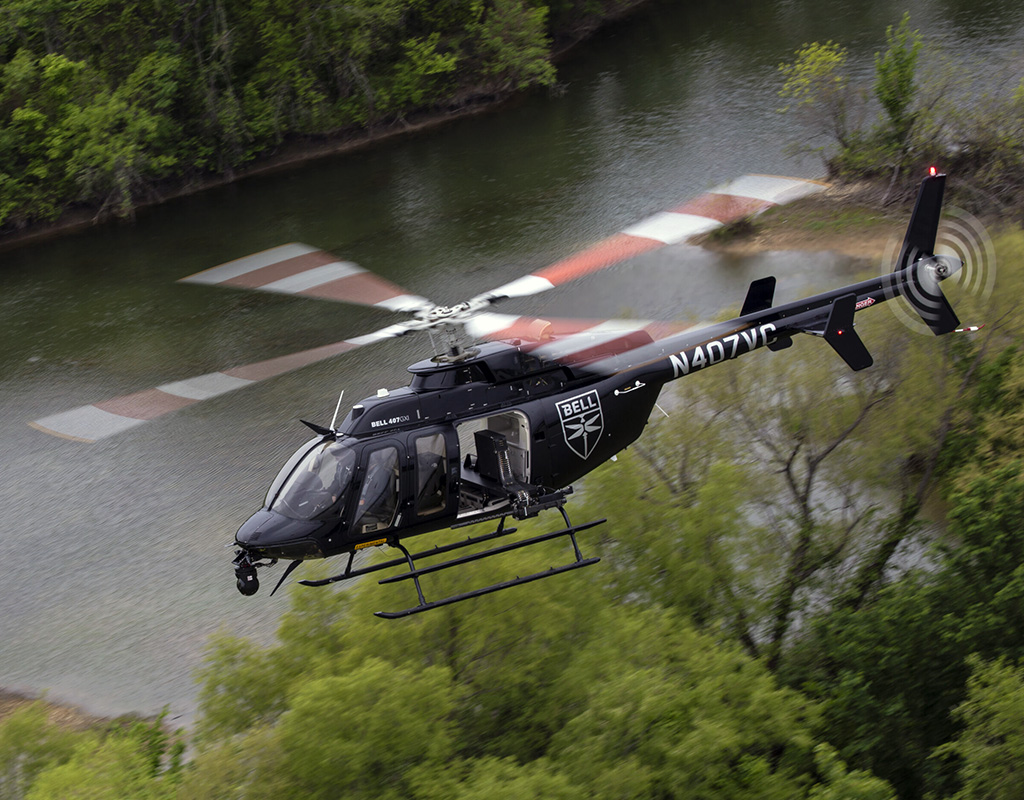
Bell is developing militarized versions of its civil helicopter line to bring a low-cost defensive rotary-wing capability to market, with the main target being countries that may have previously flown Russian-built airframes.
Russia’s invasion of Ukraine has resulted in the implementation of crippling economic sanctions on the former, and these are having a knock-on impact on any country attempting to operate a Russian helicopter.
“This is not going to be a momentary thing — those sanctions are going to devastate the Russian rotorcraft industry,” Jeff Schloesser, executive VP of strategic pursuits at Bell, told reporters during a recent briefing at the company’s Flight Research Center in Arlington, Texas.
“It’s not that [these countries] don’t want to buy former Russian equipment or Russian equipment — they’re not going to be able to buy it. . . . As long as the sanctions stay fit, my guess would be the aircraft will be rapidly unflyable.”
Bell’s solution is to offer civil aircraft outfitted with military equipment, and the first type available is the Bell 407. A militarized 407 was shown to reporters during the briefing, having recently returned to Arlington from a firing range where it had tested its capabilities.

The aircraft is equipped with a weapon mounting system — installed along the rear cabin and protruding from the cabin doors — with four mounting stations. A multi-sensor imaging system is mounted under the aircraft’s nose.
The 407 shown to reporters was armed with guns and rockets, but Michael Deslatte, VP and program director of H-1/Special Mission Aircraft at Bell, said it had the capability to carry weapons the size of Advanced Precision Kill Weapon Systems [APKWS] and Hellfire missiles.
“When you talk about the areas of the world that need defensive capabilities on the aircraft, and you talk about some of the exquisite capabilities that we provide to the U.S. military — whether it be H-1 or V-280, or Bell 360 — those are exquisite capabilities,” said Deslatte. “Many threat environments in the world don’t really require that and they don’t necessarily have the budget to support that.”

He said Bell is focused on providing a level of capability that was “a little more approachable,” with the aircraft sold either through the Foreign Military Sales (FMS) program or as a direct commercial sale, depending on the country and licensing required.
The level of configuration was entirely customizeable, he added. A light configuration could include fixed forward guns and rocket pods, while a heavier configuration could also include aircrew survivability equipment, such as chaff and flare defensive countermeasures.
Next on the line for militarization is the 412, which Deslatte said could operate in tandem with the 407 in much the same way the U.S. Marines Corps utilizes the AH-1Z with the UH-1Y.
“Now you got a very similar capability with a much lower cost of operation that can be quickly reconfigurable into a VIP aircraft, if needed.”

Deslatte said the program benefits from Bell’s legacy in the civil sphere, as well as its experience in militarization through the H-1 and V-22 programs.
“We’ve got an amazing installed base, we’ve got support and services all over the world,” he said. “We also have some incredible intellectual property in terms of missionizing aircraft.”
Bell believes the most obvious potential customers for this sort of capability are in Eastern Europe, with African countries also expected to be interested.
“[These are] countries, even if they didn’t think two years ago that they would want to go with a capability like what we’re describing, they’re going to end up for reasons of either public safety, or more importantly, for paramilitary or military reasons, you can see them going to this kind of market,” said Schloesser. “It’s a market that I think we’re just starting to see it build and I think it will take off in a year or two.”

